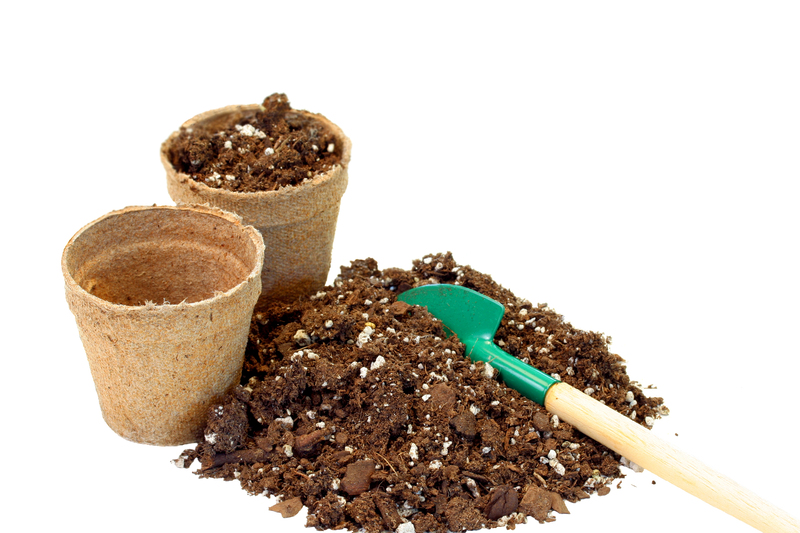The Perfect Hedge: Trimming Techniques for Every Gardener
Posted on 19/06/2025
Are you dreaming of cultivating the perfect hedge? Sculpted, vibrant, and perfectly trimmed hedges are not just for stately homes or palatial gardens. Every gardener can achieve beautiful green boundaries with the right knowledge and skills. In this comprehensive guide, we'll explore professional hedge trimming techniques tailored for gardeners at every level, covering tool selection, timing, shaping, maintenance, and troubleshooting common issues. Whether you want a privacy screen or an ornamental highlight, the perfect hedge is within your reach.
Why Hedges Matter in Your Garden
Hedges serve numerous functions in gardens and landscapes. They provide privacy, buffer wind, help define spaces, reduce noise, and display seasonal interest with flowers, berries, and foliage. Well-trimmed hedges greatly enhance curb appeal and overall landscape value. Improperly maintained hedges, however, can become overgrown, sparse, or unhealthy.
Key Benefits of Maintaining the Perfect Hedge:
- Privacy and Security: Dense hedges create natural barriers and hide unsightly views.
- Wildlife Habitat: Many birds and pollinators thrive in and around hedgerows.
- Aesthetic Appeal: Trimmed hedges frame gardens, walkways, and yards beautifully.
- Property Value: A well-maintained hedge can boost your home's value and desirability.

Choosing the Right Hedge Plant
The journey to a perfectly trimmed hedge begins with the right plant selection. Consider your climate, soil, light levels, and purpose for the hedge. Evergreens like boxwood, yew, and privet are popular for year-round coverage. Deciduous options such as hornbeam and beech provide lovely changes across seasons.
Factors to Consider When Choosing Hedge Plants:
- Growth Rate: Fast-growing varieties fill out quickly but may require more frequent trimming.
- Height and Spread: Choose species that naturally match your desired hedge size.
- Disease Resistance: Opt for hardy plants suited to your region to reduce maintenance woes.
- Leaf Texture and Color: Select foliage that enhances your garden style and blends with existing plants.
Essential Tools for Hedge Trimming
To achieve a perfectly shaped hedge, equip yourself with the right tools. Each has a specific role in the hedge trimming process:
- Manual Hedge Shears: Ideal for precise, controlled shaping of small hedges.
- Electric or Battery Hedge Trimmers: Make quick work of large stretches or tall hedges.
- Pruning Loppers: Tackle thicker stems and branches with long-reach loppers.
- Pruning Saw: For very thick or mature wood that needs removal.
- Protective Gear: Wear gloves, eye protection, and sturdy shoes for safety.
- String Line and Stakes: Use these for guidance when creating straight lines and level tops.
Keep your tools sharp and clean to protect plants from disease and to minimize damage with each cut.
Best Time to Trim Hedges
Timing is crucial for successful hedge cutting. The optimal moments depend on plant type and your goals:
- Evergreen Hedges: Light trims can be made in late spring, with shaping in late summer.
- Deciduous Hedges: Best trimmed in late spring after new growth emerges but before extreme heat.
- Flowering Hedges: Trim after blooms fade to avoid cutting off buds for the next season.
Avoid trimming in very hot, dry spells or during active frost periods--extremes can stress plants and delay recovery.
How Often Should You Trim Your Hedge?
- Rapid growers may need monthly attention during growing season.
- Slow growers can be shaped one or two times per year.
- Formally clipped hedges generally require more frequent cuts to maintain sharp lines.
Step-by-Step Hedge Trimming Techniques
Achieving the perfect hedge means more than simply cutting away excess growth. Follow these techniques for professional results:
1. Plan Your Shape and Height
Envision the final outcome. Most hedges look best with a slightly wider base tapering to a narrower top--a shape known as the "hedge profile." This lets sunlight reach the lower leaves, preventing gaps.
- Formal Hedges: Mark guidelines with string and stakes for razor-straight lines.
- Informal Hedges: Follow natural plant shapes, but still keep the base wider.
2. Start with the Sides
Begin trimming from the bottom up. Use vertical, sweeping strokes with your shears or trimmer, moving gradually upwards.
- Pro Tip: Stand back frequently to check for symmetry and avoid overcutting any single section.
3. Shape the Top
Once sides are neat, even out the top. Use your string line for a straight finish, or follow your desired curve for a softer look. Be conservative--it's easy to remove more, but you can't put it back!
4. Remove Thick or Wayward Branches
Use loppers or a pruning saw for large stems that disrupt the hedge silhouette. This opens up the center, improving light and air circulation for denser growth.
Remember: Always make clean, angled cuts to encourage quick healing and prevent disease.
5. Clean Up Edges and Base
Finish with a tidy touch. Remove fallen clippings from the hedge base to prevent rot and fungal diseases. Rake up debris and give your hedge a final visual check.
Specialized Hedge Trimming Tips for Every Gardener
For Beginners
- Start with simple shapes and slowly build confidence before tackling complex designs.
- Practice with manual shears first--you'll gain a feel for cutting before wielding power tools.
- Watch for nesting birds. Avoid disturbing wildlife, especially during spring.
For Experienced Gardeners
- Experiment with topiary--shaping hedges into creative forms or geometric patterns.
- Master "cloud pruning" for a Japanese-inspired look with rounded, organic shapes.
- Incorporate mixed species in long boundaries for year-round interest and resilience.
For Large Areas or Old Hedges
- Divide the job over several days to prevent fatigue and maintain consistency.
- Use powered trimmers for efficiency, but finish detailing by hand for a sharp look.
- Rejuvenate old, bare-bottomed hedges by cutting them back hard in late winter. Feed and mulch to encourage regrowth.
Common Problems and How to Fix Them
Even the most attentive gardener may face challenges. Here's how to troubleshoot:
- Hollow or Sparse Bases: Cut the top narrower and let more light reach the bottom. Consider gentle rejuvenation cuts.
- Browning Leaves: Over-trimming or trimming during drought can stress the plant. Water well and mulch after pruning.
- Uneven Hedges: Retrace with string guides. Use gradual corrections rather than drastic, uneven cuts.
- Disease or Pest Damage: Prune out diseased sections, disinfect tools, and apply appropriate sprays if necessary.
Seasonal Hedge Maintenance
Seasonal attention ensures lush, healthy hedges all year round:
- Spring: Feed with balanced fertilizer. Trim lightly to shape early growth.
- Summer: Main clipping period; keep edges crisp and water during dry spells.
- Fall: Remove weak or diseased growth before dormancy. Mulch base to protect roots.
- Winter: Avoid major trimming, but remove any storm-damaged branches as needed.
Eco-Friendly Hedge Trimming Practices
Sustainability matters. Adopting eco-friendly hedge trimming strategies benefits both your garden and local wildlife:
- Compost clippings whenever possible, returning nutrients to your soil.
- Leave portions untrimmed during bird nesting season to provide safe habitats.
- Use manual tools for small jobs to reduce noise and emissions.
- Select native hedge species for resilience and biodiversity enhancement.

Frequently Asked Questions about Hedge Trimming
How do I keep my hedge straight and even?
Use guidelines: Stretch string lines at the desired height along both sides. Cut along these lines, stepping back frequently to check your work.
What's the best height for a hedge?
Your hedge's function guides its height: About 3-4 feet for boundaries and up to 6 feet or more for privacy screens. Prune regularly to your preferred level for the neatest appearance.
Is it harmful to cut a hedge too often?
Frequent light trims usually strengthen hedges, making them denser. But severe or unchecked cuts--especially at the wrong time--can stress plants. Always prioritize plant health over obsessive tidiness.
Can I reshape a neglected, overgrown hedge?
Yes! With patience, even neglected hedges can be restored. Cut back harshly in late winter to stimulate dormant shoots, then train new growth through regular, gentle shaping over the next year or two.
Conclusion: The Art of the Perfect Hedge
Growing and maintaining the perfect hedge is a rewarding blend of art and science. It takes keen observation, the right tools, and steady practice. By embracing the trimming techniques and tips in this guide, every gardener--from novice to seasoned expert--can enjoy healthy, vibrant hedges that frame and enhance their landscape for years to come.
Get outside, sharpen your shears, and start sculpting the green masterpiece at the heart of your garden!

